-
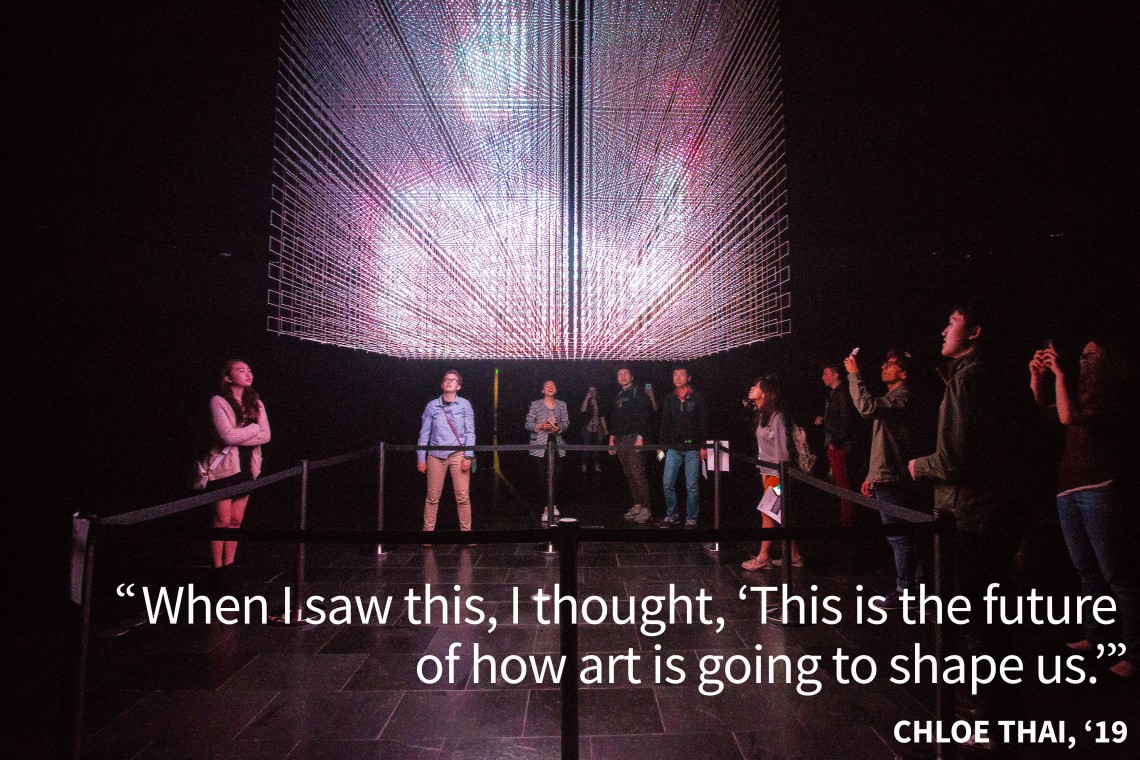
Photo by Lauren Dyer
From "Light Sculpture of Flames" -

Photo by Lauren Dyer
From "Light Sculpture of Flames" -
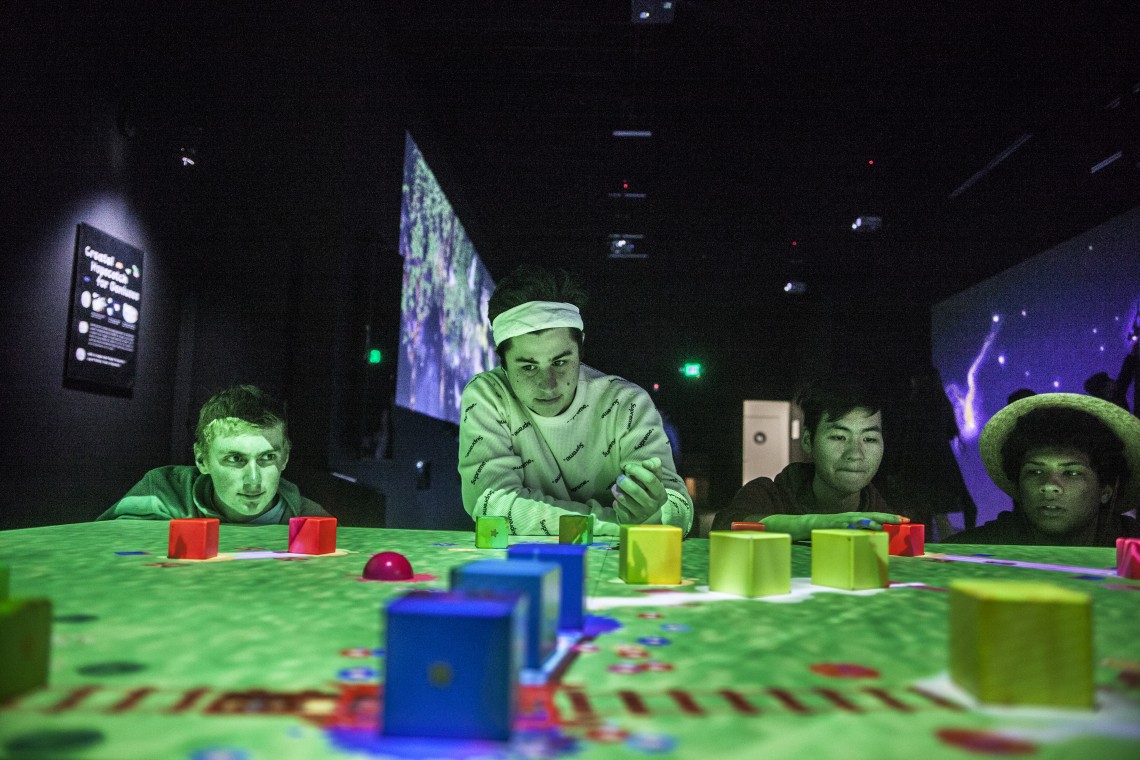
Photo by Mason Patrick Smith
From "Connecting! Train Block" -
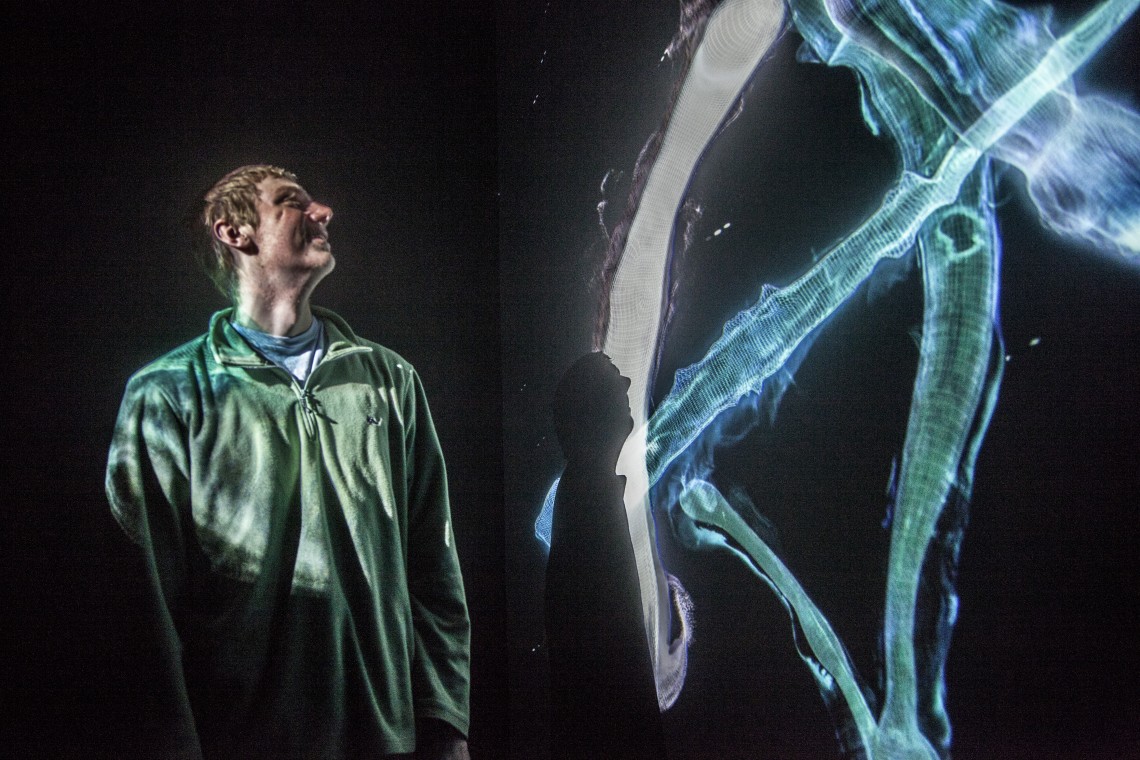
Photo by Mason Patrick Smith
From "Crows are Chased and the Chasing Crows are Destined to be Chased as Well, Division in Perspective – Light in Dark" -
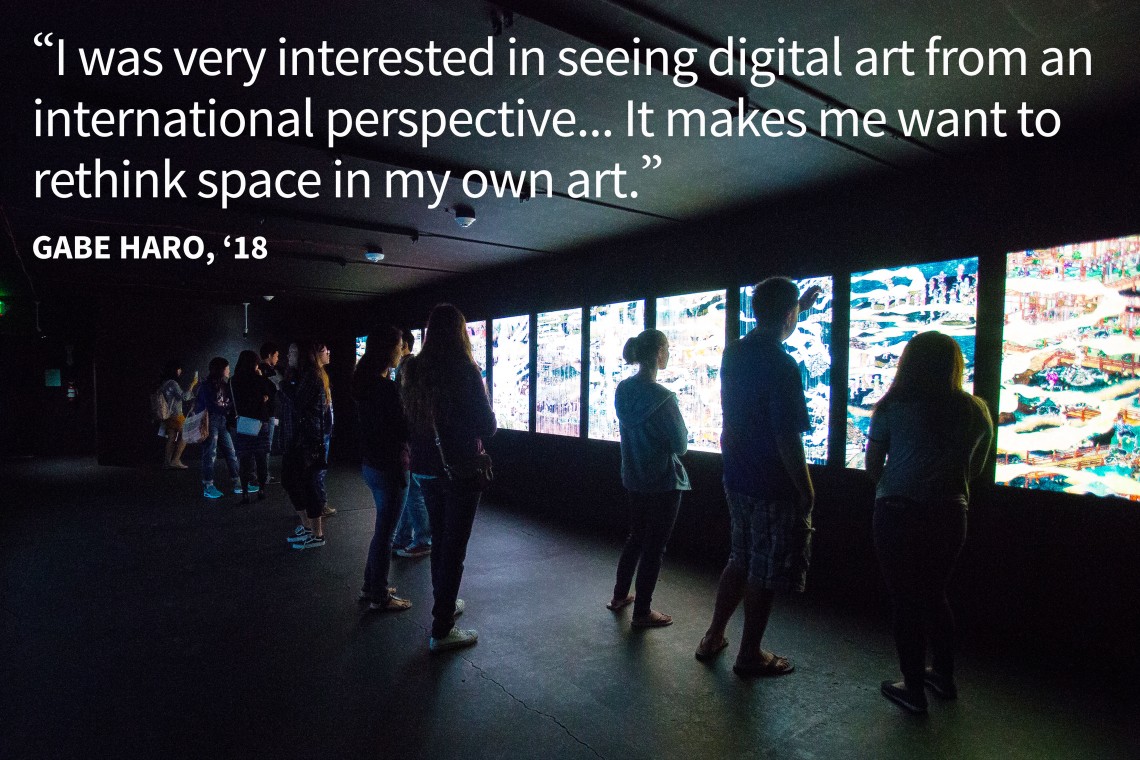
Photo by Lauren Dyer
From "Flower and Corpse Glitch Set of 12" -
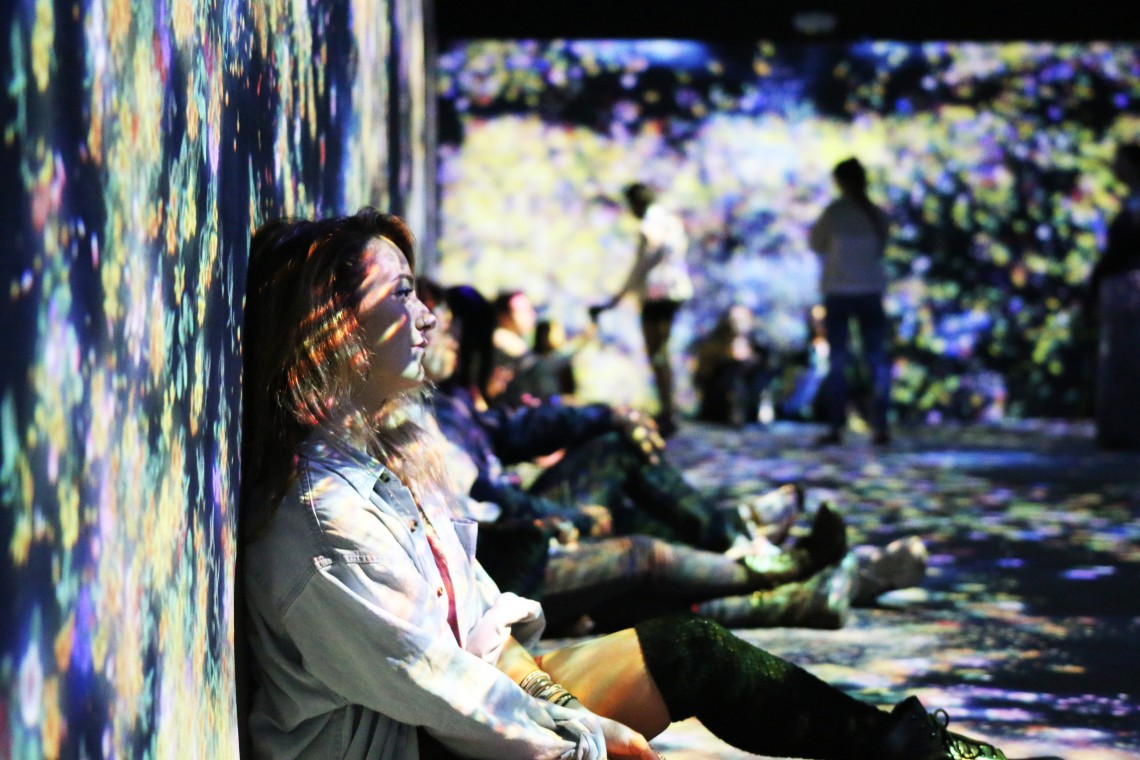
Photo by Robert Shi
From "Flowers and People, Cannot be Controlled but Live Together – A Whole Year per Hour" -
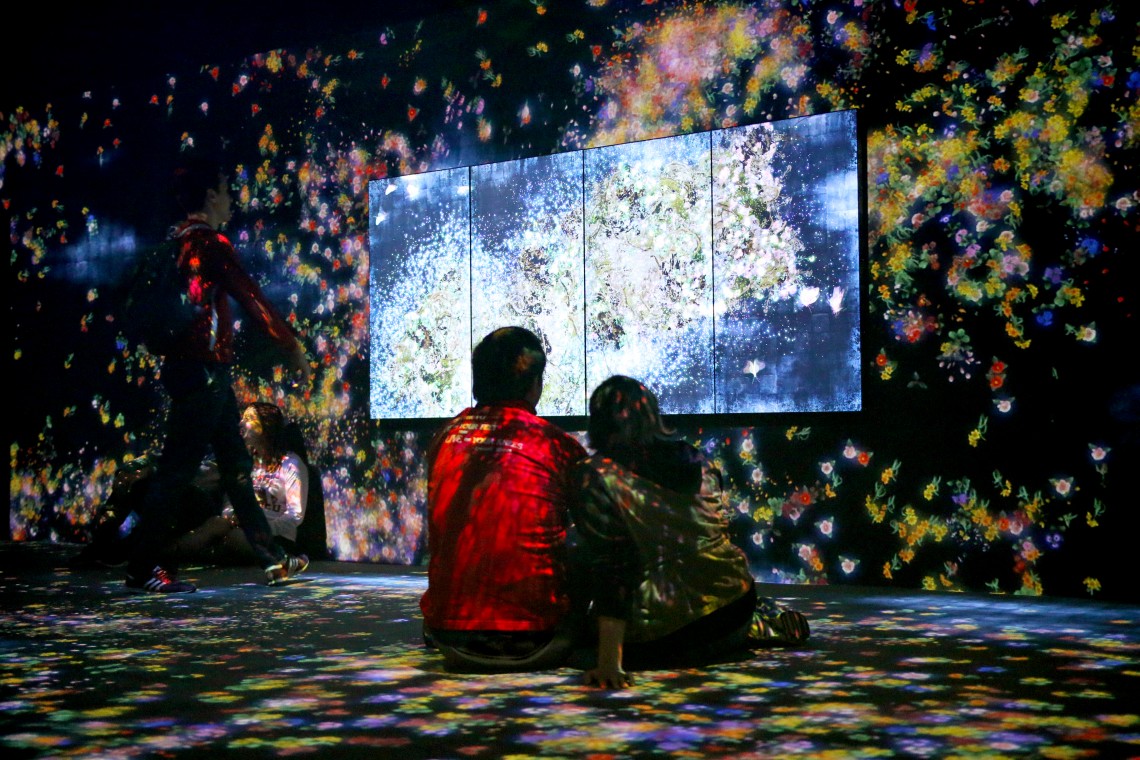
Photo by Robert Shi
From "Flowers and People, Cannot be Controlled but Live Together – A Whole Year per Hour" -
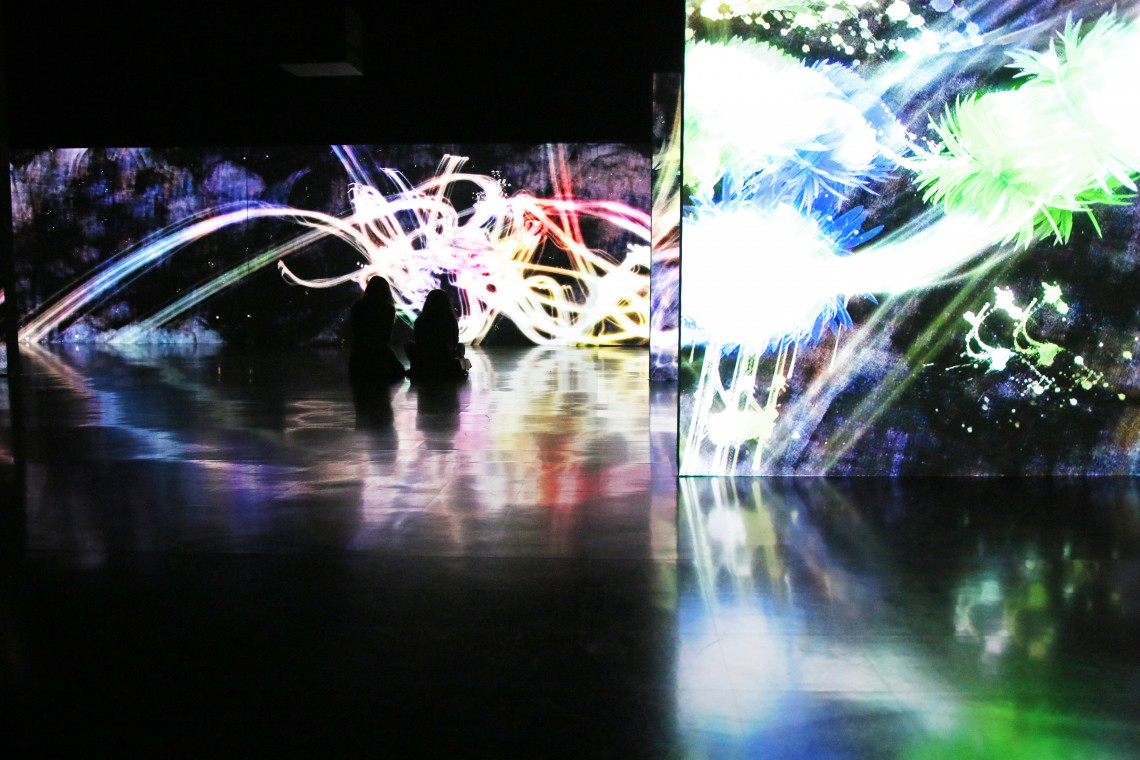
Photo by Robert Shi
From "Crows are Chased and the Chasing Crows are Destined to be Chased as Well, Division in Perspective – Light in Dark" -

Photo by Mason Patrick Smith
From "Create! Hopscotch for Geniuses" -
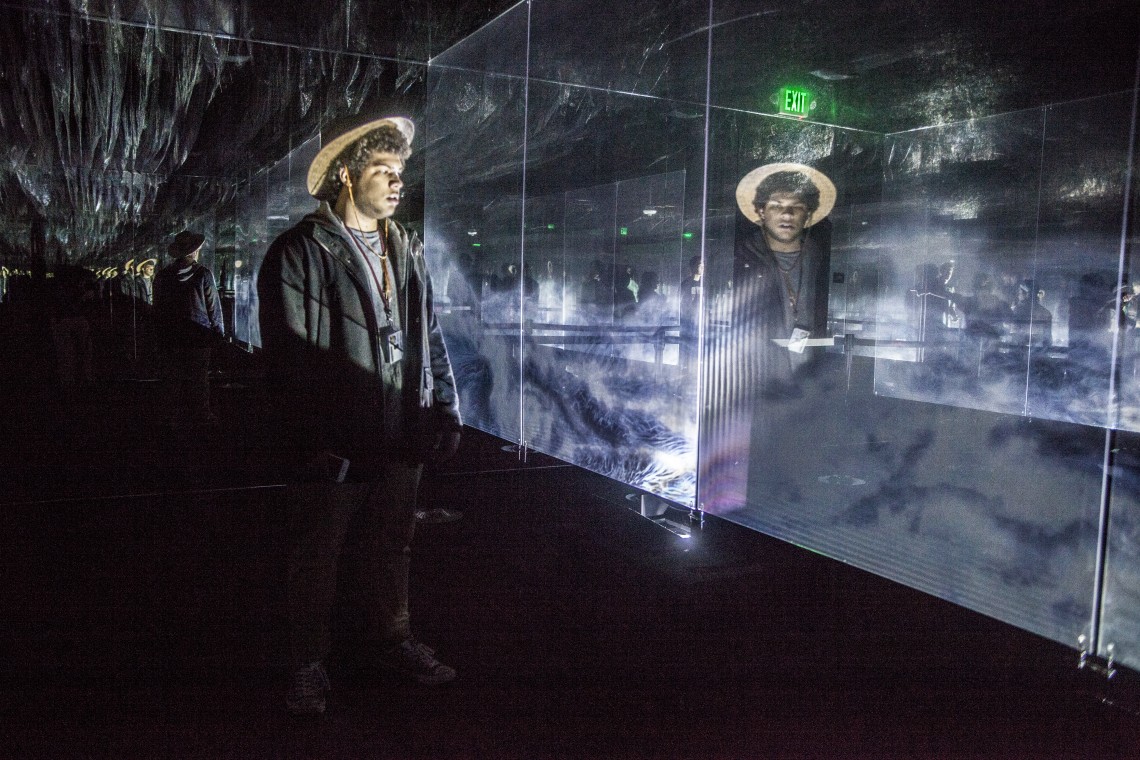
Photo by Mason Patrick Smith
From "Black Waves in Infinity"
Photo gallery from the Stanford Arts trip to Menlo Park’s Pace Gallery for teamLab’s stunning exhibition
Two weeks ago, Stanford Arts shuttled students over to Menlo Park's Pace Gallery for a mid-quarter study break.
Two weeks ago, Stanford Arts shuttled students over to Menlo Park’s Pace Gallery for a mid-quarter study break. This is where teamLab, a Tokyo-based collective of artists, engineers and designers, has set up shop, displaying 20 digital works for its interactive and immersive exhibition, Living Digital Space and Future Parks.
“I was very interested in seeing digital art from an international perspective,” said Gabe Haro, ’18, who came across teamLab through learning about Stanford’s study abroad program in Kyoto.
Haro invoked one of the installations, Flower and Corpse Glitch Set of 12, a digital animation across 12 panels examining myth and civilization. The piece is a manifestation of teamLab’s concept of “Ultra Subjective Space” which transforms the flat aesthetic in artwork from Japan’s Edo period into an animated, evolving piece in artificial 3-D space.
“[Japanese artists] saw space differently than artists did in Western paintings, so it was interesting to see how [teamLab] applied this concept to interpret art,” he said of Ultra Subjective Space. “This makes me want to rethink space in my own art.”
In another room of the gallery, Annie Phan, ’16, was having a different experience of space. Flowers and People, Cannot be Controlled but Live Together—A Whole Year per Hour, inspired by the cherry blossoms in Japan’s Kunisaki Peninsula, is an entire room covered with animated flowers and butterflies that blossom or flutter around a viewer in real time.
“I became aware of my relationship with other people in the room. Sitting with my friend, I started to notice the flowers growing around both of us,” she said.
But if Phan sat a bit further from her friend, the flowers would bloom around each person, and eventually join into a continuous floral outline. Or, if she sat alone, the flowers framing her silhouette, she became aware of just how much space she was taking up.
“It was so neat. I was literally watching someone connect with me through the flowers,” she said.
Since then, Phan, a double major in English and comparative studies in race and ethnicity, has been looking more into works that summon active engagement – for instance, choreopoems. “I’ve been thinking a lot lately about what interconnectedness looks like [in poetry], and the exhibit was such a successful exploration challenging artistic consumption and interaction.”
If you haven’t had the chance to romp through bursting shapes, sail with mythic crows, or float through misty sea spray, consider visiting Living Digital Space and Future Parks, which runs until July 1. Tickets and visiting hours are available here.
